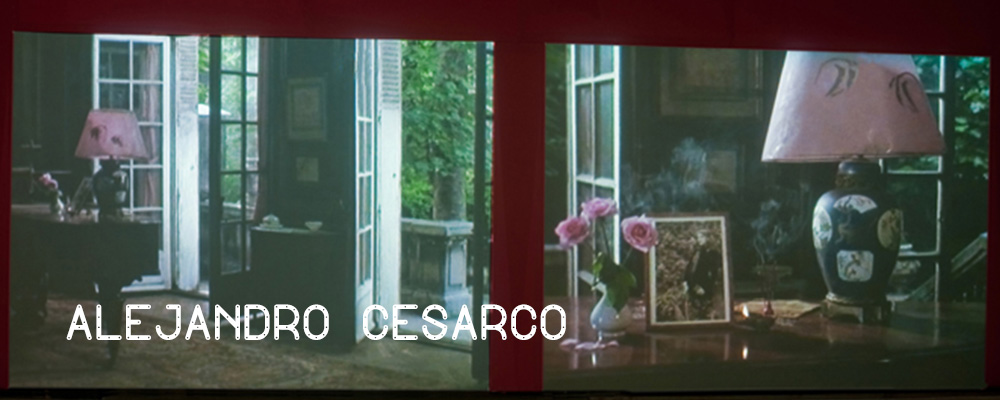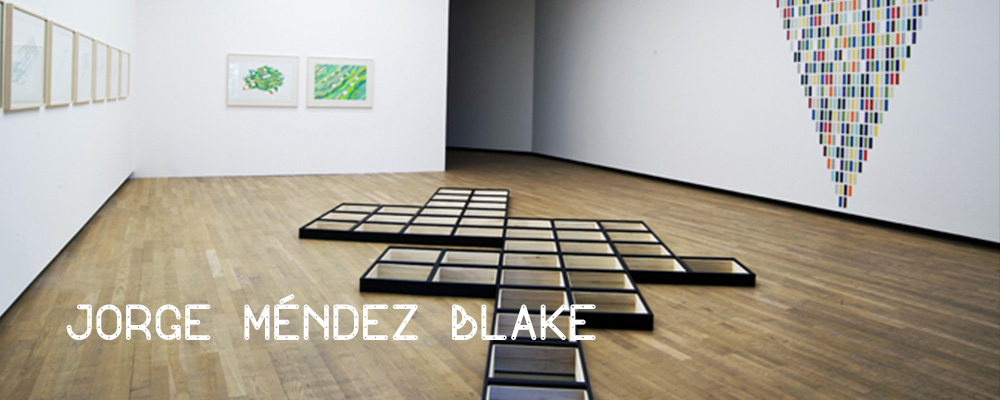Presentation
Alejandro Cesarco
The artist Alejandro Cesarco presents two Works of his own: Marguerite Duras´ India Song, 2006 – during the “Otras Voces” exhibition – invited by Florencia Malbrán and Ellos, 2009-2010, with Ana Katz, in the Contemporary Space, invited by Cintia Mezza.
Marguerite Duras' India Song (2006), by Alejandro Cesarco, presents voices in transit. Two large screens show footage from the film India Song (1975), directed by Marguerite Duras and based on her eponymous play (1973). Cesarco made an edition in which the characters from the film disappear. The remains of their presence can be found in finely cut crystal glasses, a vase of roses, a piano, or the glittering strands of the chandelier. Both projections, displayed simultaneously, prevent the focusing of attention and begin to express how impossible it is to achieve that overarching meaning. The voices in the film disappear as well. They are replaced by a female voice-over, written by Cesarco, based on the literature of Duras and inspired by the "external voices" the author used. Duras broke with narrative conventions through these "external voices," which did not come from the characters in her stories nor correspond with the writer's omniscient pen. As such, they allowed imagining the most diverse sensations and memories. Despite these variations, the voice-over now presented by Cesarco does not come off as shrill, but is rather just as constant as the flow of information we receive when entering this space.
The voice tells a story of passion. It speaks of other invisible voices that narrate the story of two characters who “perform a dance of doomed love.” The environs of the mansion, as seen on the screens, seem to provide that passionate pastime with an ideal backdrop. And the red color chosen by Cesarco for the walls emphasizes the disturbances, the love, the drama. Daniel Link’s text, another component of the work, also helps build this strange atmosphere of desire. Two bodies, or two voices, watch the film India Song. According to Link they live two days of love, even though, in the oppressive heat, one of the voices tells the other it doesn’t want them to touch. Lying on a mattress, murmuring, they share thoughts on Duras’ film. One voice says "there must be a way to look at things," but the answer is just a pause.
"The air is so still and dense," reads Link’s text. Cesarco's work is indeed thick with voices. Large words fill the space: "feminism," "modernity," "colony," "literature," "film," "leprosy." Nothing could stir up the intoxicating, smothering atmosphere.
Contemporary Space
Alejandro Cesarco and Ana Katz
“Ellos” (They), 2009-2010
Situation for two characters, publication and performance
Courtesy of the artists
For Fundación Proa’s Contemporary Space, the artist thought of the direction of a performance conceptualized in collaboration with the Argentine cinematographer Ana Katz.
The visitor will be surprised by these seemingly risky dialogs that are nonetheless part of a script that will be available in the print edition.
The performers, in theirs roles as bookstore clerks, discuss “the possibility of understanding and transmitting the experience of the other,” and about “how the contemplation of the works exhibited in the institution influence the intellectual reflection of the spectator.” The spectator’s experience with this text could, or not, produce new meanings in the scene’s reception. The piece counts on the collaboration of the renowned actress, director and dramatist Ana Katz. In this manner, this situation brings a question to the mind of the visitor, just as it emphasizes the following phrase from the script: “Beauty continues to be a question.”
Alejandro Cesarco was born in Montevideo (Uruguay), in 1975. He lives and works in New York.
He has exhibited in Latin America, the United States, and Europe. Among his latest individual exhibition, some highlights are Two Films, Murray Guy, New York, 2009; 3 Works, Tanya Leighton, Berlin, 2009: Now & Then, Charles H. Scott Gallery, Vancouver, 2009; Once Within A Room, New Langston Arts, San Francisco, 2008; Retrospective, in collaboration with John Balderdash, Murray Guy, 2007; and Marguerite Duras’ India Song, Art in General, New York, 2006.
He also works as an editor and a curator. He has curated exhibitions in Argentina, the United States, and Uruguay, and a recent project for the 6th Biennial of the Mercosur in Porto Alegre, 2007. He is the editor of Between Artists, a series of books based on conversations between artists.
Presentation
Jorge Méndez Blake
The Borges Library, 2009-10, by Jorge Méndez Blake, is a continuation of the artist’s investigations on the voices that give meaning to the very concept of the "library." For Méndez Blake, the architectural appearance of the library, as well as its role as a book archival, should be indistinguishable from its cultural contours, its possibilities to generate and transform knowledge.
The library, precisely, is a fundamental topic in Borges’ literature. Méndez Blake explained, about the artwork he created especially for Proa, “the title The Borges Library came up while remembering the stories The Library of Babel and The Garden of Forking Paths, because my library is formed by a module that can be repeated infinitely and it also is a project meant to be located outdoors, creating a sort of labyrinth.” In the former tale, Borges proposes a library, in itself a universe, consisting of geometrically identical galleries repeated over and over, creating a maze despite their uniformity.
Méndez Blake exhibits, alongside a series of drawings and a mural, a model articulated in modules. He uses a tool typical of construction works to imagine a building whose logic exceeds that of traditional architecture. The modules create in the space a grid that has no center. Their clean, abstract appearance makes it so the shelves are not seen alongside the books. Each of the modules comes to compose, paradoxically, the entire library. These units, finite and discrete, enumerate, in their partiality, the infinite and the malleable. The grid could align well with the library proposed by Borges, which includes absolutely everything. His story is very clear: "Everything: the minutely detailed history of the future, the archangels’ autobiographies, the faithful catalogue of the Library, thousands and thousands of false catalogues, the demonstration of the fallacy of those catalogues, the demonstration of the fallacy of the true catalogue, the Gnostic gospel of Basilides, the commentary on that gospel, the commentary on the commentary on that gospel, the true story of your death, the translation of every book in all languages, the interpolations of every book in all books.” Méndez Blake could have been inspired by such an abyss for his library, which also presents voices battling each other, interruptions and additions and personal implications. While Borges' narrative voice speaks to "you," the reader (as the library is unfathomable, it knows about your death), Méndez Blake's work opens itself to “we,” the spectators. The mirror in each module multiplies the perspectives of the library but also gives us back our image, imploring us on.
The mural’s rectangles could be either the spines of the library books or the building blocks of their shelves. The colors are taken from the design of the covers of several editions of Borges books. In the library proposed by Borges, meaning slips away permanently. Even if books contain total knowledge, nobody can find any final answers in them. Méndez Blake exhibits this displacement. His work challenges orders and methods. It installs unseen voices in the library, in architecture, in art and in culture.

